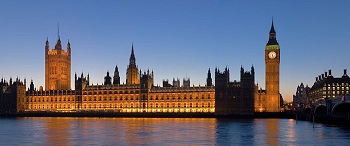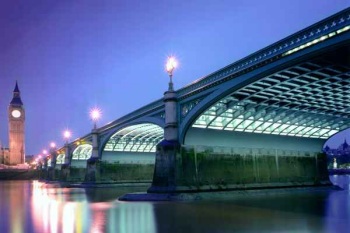Westminster


London actually consists of two cities, the City of Westminster and the City of London. Westminster takes its name from 'Westmynster' c.975 meaning west monastery and is about two miles upstream from the City of London. In the 11th century, Edward the Confessor built a Benedictine monastery dedicated to St Peter on a marshy isle called Thorney Island in the estuary of the river Tyburn. Over the centuries, Westminster gradually emerged as England's political and religious centre of power. Westminster boasts the gothic Victorian Houses of Parliament, Westminster Abbey and the monarch's London residence, Buckingham Palace.
Whitehall is a broad avenue connecting Parliament Square to Trafalgar Square. The name is taken from the original palace of Whitehall which was the London seat of the Archbishop of York. Since the 16th century nearly all the key governmental ministries and offices have relocated here including the Admiralty and the Ministry of Defence at the north end, Downing Street in the centre and the Treasury to the south.
Belgravia is a small, predominantly residential district in the City of Westminster. It was developed on reclaimed marshland between 1825 and 1830 by Thomas Cubitt. Once the domain of the 19th century aristocracy, the beautiful Georgian buildings which dominate the area are now the home of numerous embassies and their diplomats.
Location
Westminster
